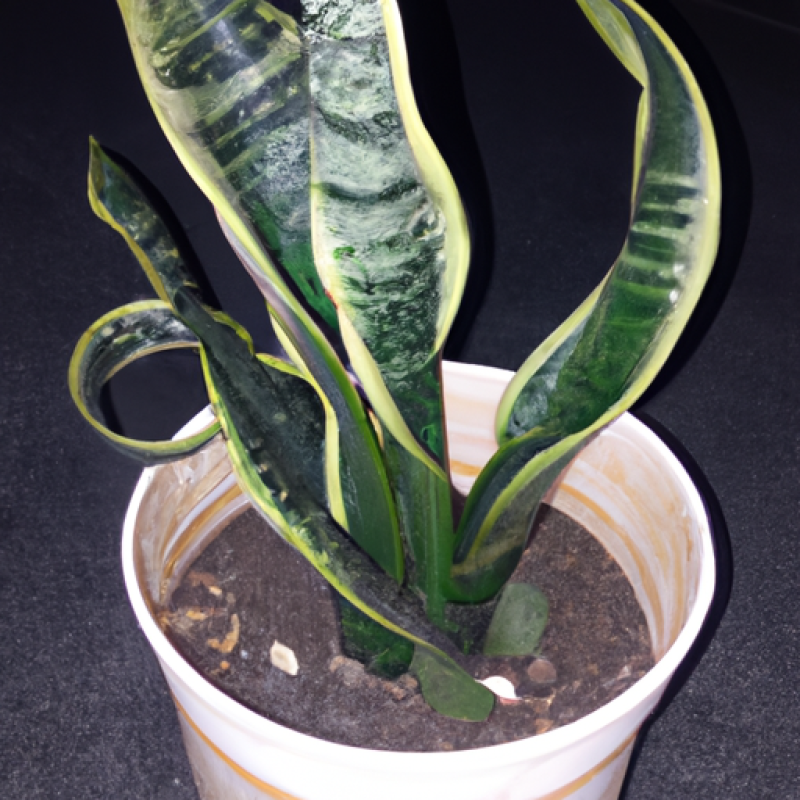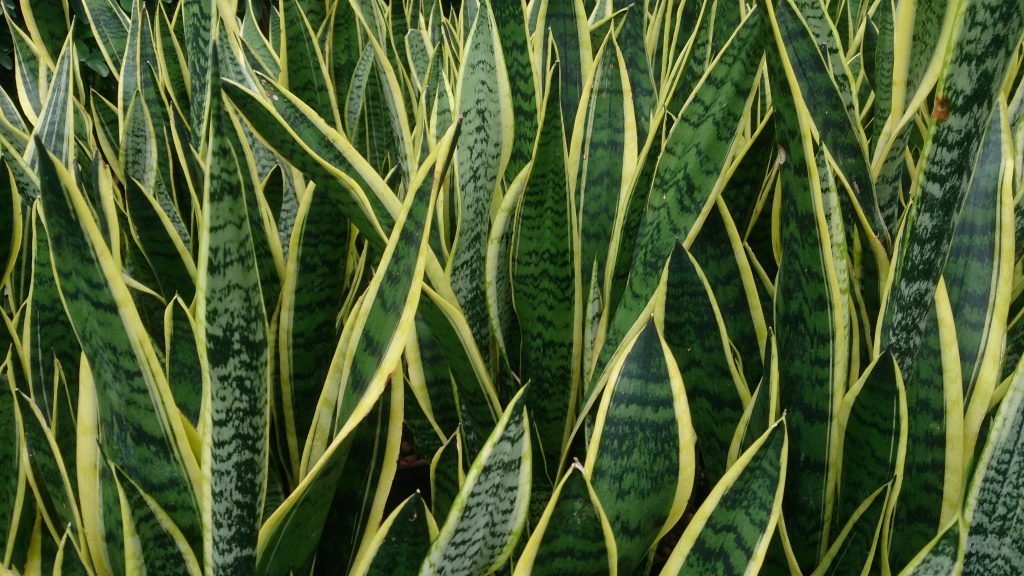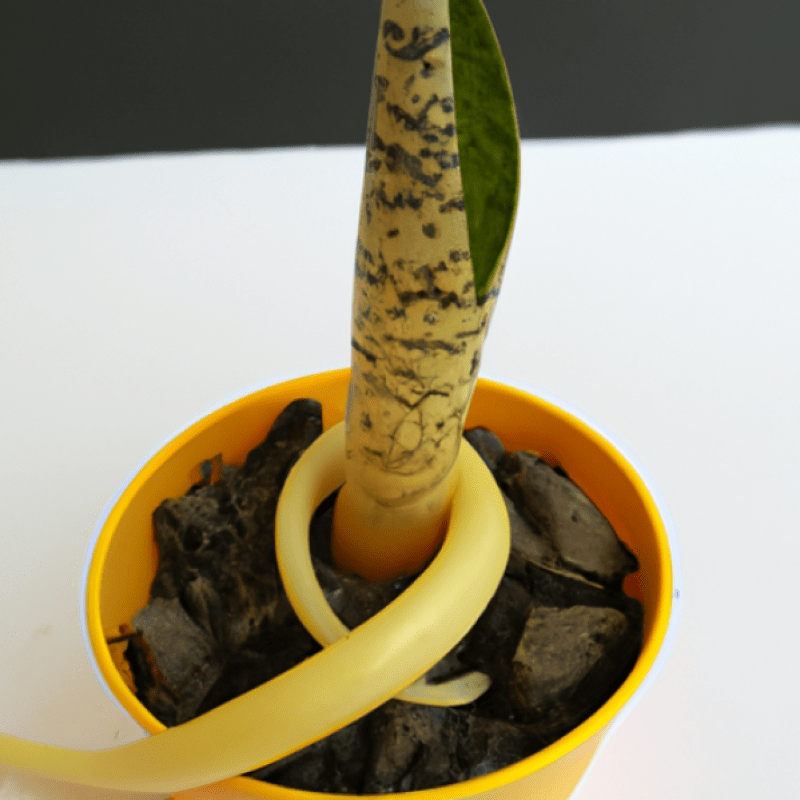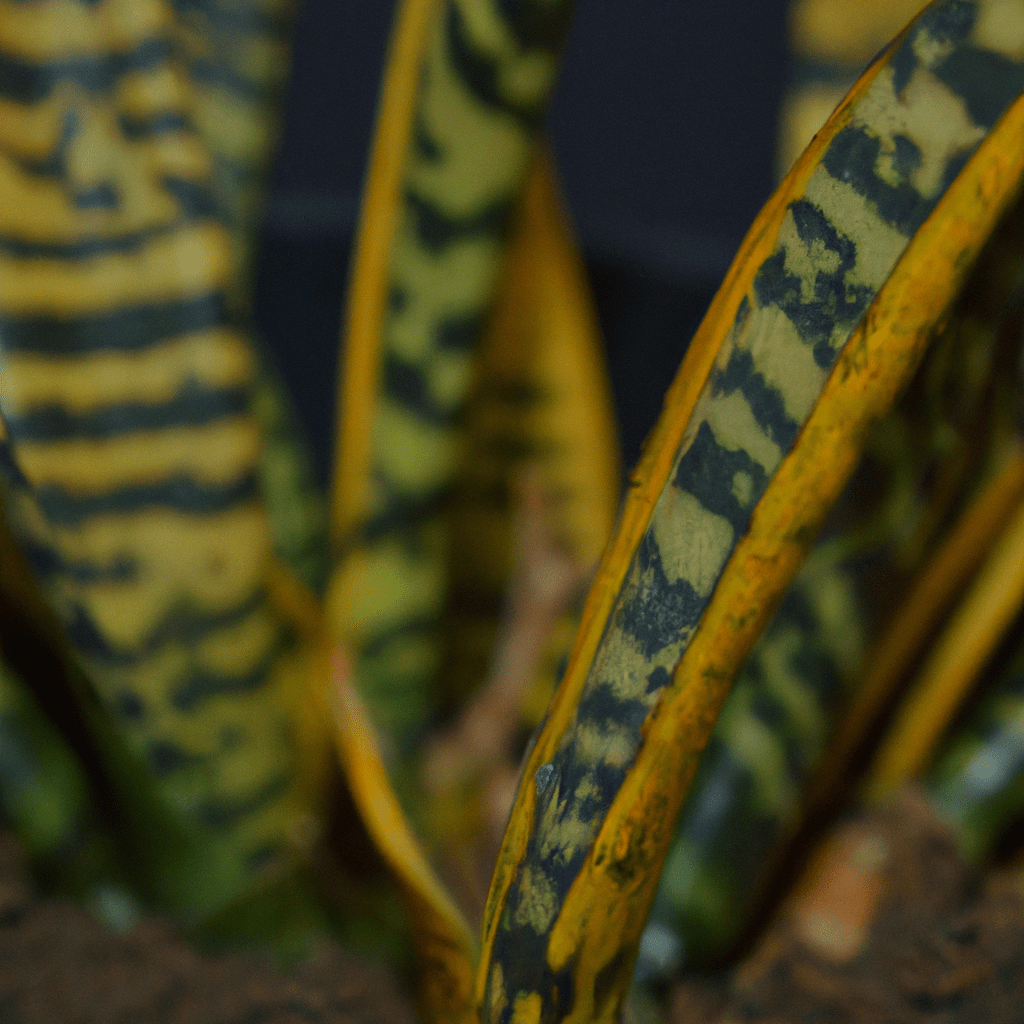Welcome, plant lovers! Today, we’re going to talk about one of the most resilient and low-maintenance plants out there – Sansevieria Robusta, also known as Snake Plant or Mother-in-Law’s Tongue. Whether you’re a seasoned plant parent or a newbie getting your hands dirty for the first time, this article will give you 20 essential questions and answers on how to care for your Sansevieria Robusta. From sunlight to watering, fertilizing to repotting, we’ve got you covered! So, grab your gardening gloves, put on your green thumbs, and let’s dive into the world of Sansevieria Robusta!
1. How often should I water my Sansevieria Robusta?
Sansevieria Robusta is a succulent plant that requires moderate watering. Overwatering can cause root rot and under watering can lead to drying out of the plant. The frequency of watering depends on various factors such as the humidity level, temperature, soil type, and light exposure. As a general rule, water the plant when the top inch of soil feels dry to touch. During the summer months, water once a week, and reduce the frequency during the winter months. Ensure that the container has drainage holes to prevent water from accumulating at the bottom. Avoid splashing water on the leaves as it can cause fungal growth. In case of underwatering, the leaves may become wrinkled, and in case of overwatering, the leaves may turn yellow. Regularly check the soil moisture level and adjust the watering accordingly. With proper care, Sansevieria Robusta can thrive and add a touch of greenery to your living space.
2. What type of soil should I use for Sansevieria Robusta?
Sansevieria Robusta prefers a well-draining soil mix that is rich in organic matter. A mix of peat moss, perlite, and sand is suitable for this plant. It is important to ensure that the soil is not too compacted, as this can lead to waterlogging and root rot. A pH level between 6.0-6.5 is ideal for Sansevieria Robusta. Avoid using heavy clay soils or soil mixes with high levels of organic matter, as these can retain too much moisture and lead to root rot. It is also important to choose a pot with good drainage holes to allow excess water to drain away. Avoid overwatering the plant, as this can also lead to root rot. Sansevieria Robusta is a hardy plant and can tolerate a range of soil conditions, but providing it with a well-draining soil mix will ensure optimal growth and health.
3. Can Sansevieria Robusta be grown indoors?
Sansevieria Robusta, commonly known as Snake Plant or Mother-in-Law’s Tongue, is a hardy plant that can grow in a wide range of conditions. It is native to West Africa and can be grown both indoors and outdoors. However, its ability to thrive indoors makes it a popular choice for indoor gardeners.
Sansevieria Robusta is a low maintenance plant that does well in low light conditions, making it perfect for indoor spaces. It also has air-purifying properties that make it a popular choice for offices and homes.
To grow Sansevieria Robusta indoors, it is important to provide it with well-draining soil and a pot with drainage holes. The plant prefers bright, indirect light but can also tolerate low light conditions. It is important not to overwater the plant as it can cause root rot. Allow the soil to dry out between watering.
Overall, Sansevieria Robusta is a great choice for indoor gardening as it is low maintenance and can improve the air quality of your home or office.
4. How much light does Sansevieria Robusta need?
Sansevieria Robusta is a hardy plant that can withstand a variety of lighting conditions. However, to thrive, it requires bright, indirect sunlight. This plant prefers to be in a location that receives at least six hours of sunlight per day, but it can also tolerate low light conditions. It is important to avoid placing the Sansevieria Robusta in direct sunlight, as it can burn the leaves and cause irreparable damage.
If the plant is not receiving enough light, it will start to show signs of stress. The leaves may become pale or yellow, and the plant may stop growing. On the other hand, if the Sansevieria Robusta is receiving too much light, the leaves may become brown or crispy. To ensure the optimum amount of light for this plant, it is recommended to place it near a north- or east-facing window or to provide artificial light if necessary. Regularly rotating the plant can also help ensure that all parts of it receive an equal amount of light.
5. What is the best temperature for Sansevieria Robusta?
Sansevieria Robusta thrives in temperatures between 60-85°F. It is important to keep in mind that this plant prefers warmer temperatures during the day and cooler temperatures at night. Extreme temperature fluctuations should be avoided as it can lead to stress on the plant. Additionally, Sansevieria Robusta is sensitive to frost and should be protected during the winter months. It is also important to note that humidity levels should be kept at moderate levels. High humidity can lead to fungal diseases and low humidity can cause the leaves to dry out. Proper temperature and humidity levels are crucial for the health and growth of Sansevieria Robusta.
6. How often should I fertilize Sansevieria Robusta?
Sansevieria Robusta is a plant that requires minimal care when it comes to fertilization. It is recommended to fertilize the plant once every two months during the growing season, which is usually from spring to fall. Using a balanced fertilizer with an NPK ratio of 10-10-10 or 20-20-20 is suitable for this plant. Be cautious not to over-fertilize, as it may cause damage to the plant. Always follow the instructions given on the fertilizer packaging. During the winter season, Sansevieria Robusta enters a dormant phase, and it is advised not to fertilize the plant during this time. Instead, it is better to focus on maintaining the soil moisture levels and ensuring the plant gets enough light. Regularly dusting the leaves with a damp cloth helps the plant breathe and absorb nutrients more effectively.
7. How big can Sansevieria Robusta grow?
The growth potential of Sansevieria Robusta is a topic of much intrigue and debate in the botanical community. While it is widely accepted that this species can reach impressive heights, estimates vary greatly depending on a range of environmental factors and genetic variations. Under optimal conditions, specimens of Sansevieria Robusta have been known to grow as tall as six feet, with impressive root systems that can extend several feet deep into the soil. However, these exceptional examples are rare and require carefully controlled conditions to reach their full potential. In general, most Sansevieria Robusta plants will grow to be between two and four feet in height, with a similar spread. It is important to note that proper care, including regular watering and fertilization, can greatly impact the growth and overall health of these fascinating plants.
8. Does Sansevieria Robusta need to be repotted?
Sansevieria Robusta, commonly known as the Snake Plant, is a hardy plant that can withstand neglect and low light conditions. Repotting is not necessary unless the plant has outgrown its current container or the soil has deteriorated, which typically takes several years. When repotting, choose a container that is only slightly larger than the current one to prevent overwatering and root rot. Use well-draining soil and ensure the plant is not buried too deep. The best time to repot is in the spring, when the plant is actively growing. It is important to note that Sansevieria Robusta prefers to be slightly root-bound, so repotting too frequently can harm the plant’s growth. In conclusion, while Sansevieria Robusta may not require frequent repotting, it is important to monitor the plant’s growth and soil conditions to determine if repotting is necessary.
9. Can Sansevieria Robusta tolerate drought?
Sansevieria Robusta, commonly known as Snake Plant, is a hardy and drought-tolerant species. It can survive extended periods of dry conditions due to its ability to store water in its leaves. The plant’s succulent leaves are capable of photosynthesizing even under low light conditions, which allows it to conserve moisture.
Additionally, Sansevieria Robusta has a unique root system that allows it to absorb water efficiently. Its roots are modified to retain water for longer periods, giving the plant an added advantage during droughts.
However, it is essential to note that while Sansevieria Robusta can tolerate drought, it doesn’t mean it should be left without water for extended periods. Overwatering can be detrimental to the plant’s health, as it can lead to root rot and other fungal diseases.
To maintain Sansevieria Robusta’s health, it is recommended to water the plant only when the soil is dry and to ensure proper drainage. This will provide the plant with adequate moisture while preventing waterlogging and fungal infections.
10. How do I propagate Sansevieria Robusta?
Sansevieria Robusta can be propagated through division, leaf cuttings, or rhizome cuttings. To propagate through division, carefully separate the offsets from the parent plant and plant them in a well-draining potting mix. For leaf cuttings, cut a leaf into several sections and place them in moist soil until they develop roots. Rhizome cuttings involve removing a portion of the rhizome and planting it in a new pot. Regardless of the method used, it’s important to ensure the new plants have adequate light and water for optimal growth. It’s also important to note that Sansevieria Robusta is a slow-growing plant and may take some time to establish in its new environment. Patience and proper care are key to successful propagation.
11. How do I prevent root rot in Sansevieria Robusta?
To prevent root rot in Sansevieria Robusta, it’s important to ensure that the soil is well-draining and not overly watered. The use of a high-quality potting mix can help provide proper drainage. It’s also important to avoid allowing the plant to sit in standing water for long periods of time. Avoid overwatering and allow the soil to dry out slightly between waterings. Proper light and temperature conditions can also contribute to the health of the plant and help prevent root rot. Sansevieria Robusta prefers bright, indirect sunlight and temperatures between 60-85°F. Additionally, it’s important to periodically check the roots for any signs of rot or disease and remove any affected areas immediately. Regularly repotting the plant can also help promote healthy growth and prevent root rot.
12. Can Sansevieria Robusta be grown in water?
Sansevieria Robusta, commonly known as the Snake Plant, is a hardy plant that can thrive in a variety of growing conditions. While it is possible to grow this plant in water, it is not recommended as a long-term solution.
Sansevieria Robusta is a succulent that stores water in its leaves, making it well adapted to dry conditions. However, when grown in water, its roots become waterlogged, which can lead to root rot. Additionally, the plant may become too top-heavy and tip over in the water.
If you choose to grow Sansevieria Robusta in water, it is important to change the water frequently to prevent bacterial growth and to add a small amount of plant food to the water to provide necessary nutrients. However, it is best to grow this plant in a well-draining soil mix in a pot with drainage holes to ensure optimal growth and health.
13. How do I prune Sansevieria Robusta?
Pruning Sansevieria Robusta is a delicate task that requires careful attention. The first step is to identify any damaged or diseased leaves and cut them off at the base using sharp, sterile pruning shears. It is important to remove these leaves as soon as possible to prevent the spread of disease to healthy parts of the plant.
Next, inspect the plant for any leaves that are brown, yellow, or limp. These leaves are likely suffering from overwatering or underwatering and should be removed. If the plant has grown too tall or leggy, it can be trimmed back to encourage new growth.
It is important to note that Sansevieria Robusta does not require frequent pruning. In fact, over-pruning can be detrimental to the plant’s health. As a general rule, only prune when necessary and avoid removing more than one-third of the plant’s foliage at a time.
Overall, pruning Sansevieria Robusta is a straightforward process that can help promote healthy growth and prevent disease. With proper care and attention, this plant can thrive for years to come.
14. What pests and diseases affect Sansevieria Robusta?
Sansevieria Robusta, also known as snake plant, is a popular ornamental plant that is susceptible to several pests and diseases. One of the most common pests that affect Sansevieria Robusta is spider mites. These tiny pests can be difficult to detect but can cause significant damage to the plant, leading to stunted growth and discolored leaves. Another pest that can affect the plant is mealybugs, which feed on the plant’s sap and can cause wilting and yellowing of leaves.
In terms of diseases, Sansevieria Robusta can be susceptible to root rot, which is caused by overwatering and poor drainage. This can cause the plant to wilt and eventually die. Leaf spot disease is another common issue, characterized by brown or black spots on the leaves, which can be caused by fungal infections or bacterial pathogens.
Preventive measures such as proper watering, ensuring adequate drainage, and regular inspection for pests can help minimize the risk of these issues. Treatment options include insecticidal soap or neem oil for pests and fungicides for fungal diseases.
15. Can Sansevieria Robusta purify the air?
Sansevieria Robusta is commonly known as the snake plant and is popularly used as an indoor plant. It is said to be an effective air purifier, removing toxins such as formaldehyde, benzene, and trichloroethylene from the air. However, the ability of the snake plant to purify the air has been a topic of debate among botanists. While some studies have shown that snake plants can remove certain pollutants from the air, others have suggested that the plant’s potential to purify the air is limited. The snake plant is known to release oxygen during the night, making it a good plant to have in one’s bedroom. But it is important to note that air purification through plants is a slow process and requires multiple plants to have a significant impact. Therefore, while the snake plant may have air-purifying properties, it should not be relied upon as the sole means of purifying indoor air.
16. Is Sansevieria Robusta toxic to pets?
Sansevieria Robusta is known for its hardiness and resilience, making it a popular houseplant choice. However, as a botanist, it is important to note that this plant can be toxic to pets if ingested.
The Sansevieria Robusta contains saponins, which can cause gastrointestinal upset in pets such as dogs and cats. Symptoms may include drooling, vomiting, diarrhea, and lethargy.
It is important to keep this plant out of reach of pets, especially if they have a tendency to chew on plants. If you suspect your pet has ingested Sansevieria Robusta, it is recommended to contact your veterinarian immediately.
While Sansevieria Robusta may be a beautiful addition to your home, it is important to prioritize the safety of your pets and take precautionary measures to prevent any potential harm.
17. How do I propagate Sansevieria Robusta pups?
Propagation of Sansevieria Robusta pups involves several steps, including identifying the right time for propagation, selecting a healthy mother plant, and preparing the potting mix. Ensure that the mother plant is mature enough to produce healthy offspring, and select healthy and well-developed pups. Cut the pups from the mother plant using a sterilized tool and ensure that the cuttings are at least two inches long. After cutting, let the pups dry for several hours or days before planting to avoid rot. Use a well-draining potting mix and plant the pups at a depth that covers the roots. Water the newly planted pups sparingly, and avoid over-watering to prevent rot. Ensure that the plant receives bright and indirect sunlight to facilitate rapid growth. With the right care, Sansevieria Robusta pups can grow healthy and strong, providing an excellent addition to your indoor garden.
18. Can Sansevieria Robusta be grown in low light?
Sansevieria Robusta can survive in low light conditions, but it may not thrive. While it belongs to the snake plant family, which is known for its hardiness and adaptability to various conditions, low light can still impact its overall growth and health. Sansevieria Robusta is capable of tolerating low light, but it will grow slower and may become leggy. The plant’s leaves may also lose their variegation and turn a darker green color. To promote healthier growth, it’s recommended to keep Sansevieria Robusta in bright, indirect light. However, if growing in low light is the only option available, it’s important to ensure that the soil is well-draining and moisture levels are consistent. Overwatering Sansevieria Robusta in low light conditions can lead to root rot, which can be fatal to the plant.
19. How often should I clean Sansevieria Robusta leaves?
Sansevieria Robusta leaves should not be cleaned frequently as they have special characteristics that can withstand dust and dirt accumulation. However, if the leaves are visibly dirty, wiping them with a damp cloth can be done every 2-3 months or as needed. It is important to avoid getting water on the leaves as it can cause rotting. Additionally, Sansevieria Robusta prefers a dry environment, so over-cleaning may disrupt its natural balance. It is also important to note that Sansevieria Robusta is a slow-growing plant, so any damage done to the leaves may take a long time to heal. Therefore, it is best to leave the leaves as they are and avoid any unnecessary handling or cleaning. Overall, Sansevieria Robusta is a low-maintenance plant, and minimal cleaning is required to keep it healthy and thriving.
20. Is Sansevieria Robusta easy to care for?
Sansevieria Robusta, more commonly known as Snake Plant or Mother-in-law’s Tongue, is a species of flowering plant that is native to West Africa. It has become a popular houseplant due to its low maintenance requirements and air-purifying abilities.
- This plant can tolerate a wide range of light conditions, from bright direct sunlight to low indirect light. However, it does best in medium to bright indirect light.
- Sansevieria Robusta is very drought-tolerant and can go weeks without watering. It is important to let the soil dry out completely before watering again to prevent root rot.
- The plant prefers well-draining soil and does not require fertilization often. Fertilize only once or twice a year with a balanced fertilizer.
- Regular cleaning of the leaves with a damp cloth will help prevent pests and keep the plant looking healthy.
Overall, Sansevieria Robusta is a very easy plant to care for and is great for beginners or those who do not have a lot of time to dedicate to plant care.
So there you have it, folks! 20 questions that will help you become a Sansevieria Robusta expert in no time. From the basics of watering and sunlight to more advanced topics like propagation and pest control, we’ve covered it all.
But remember, caring for your Sansevieria Robusta is a journey, not a destination. There will always be new challenges and surprises along the way, but with these tips and tricks under your belt, you’ll be well-equipped to handle them like a pro.
So go forth and get your hands dirty, my fellow plant lovers! Your Sansevieria Robusta is counting on you to give it the love and attention it deserves. Happy growing!



